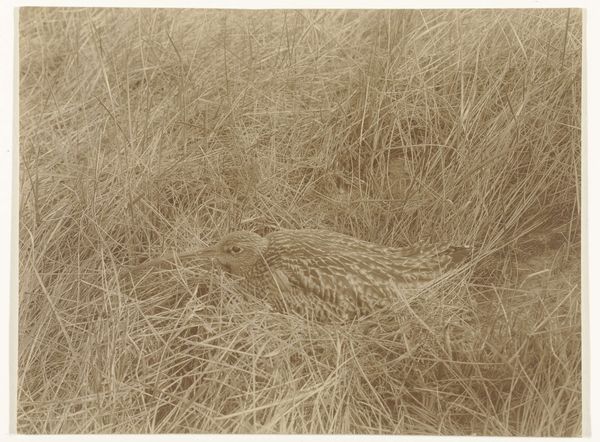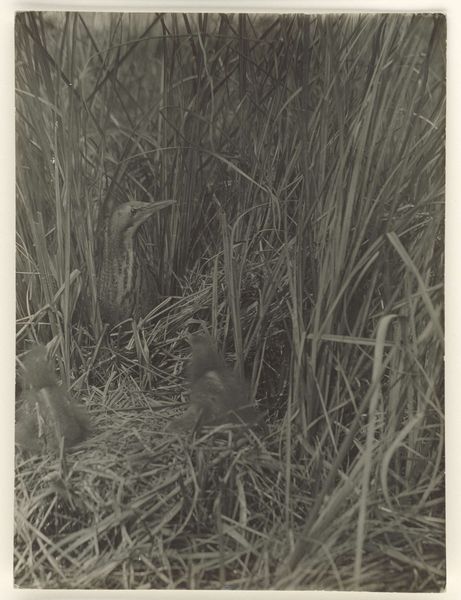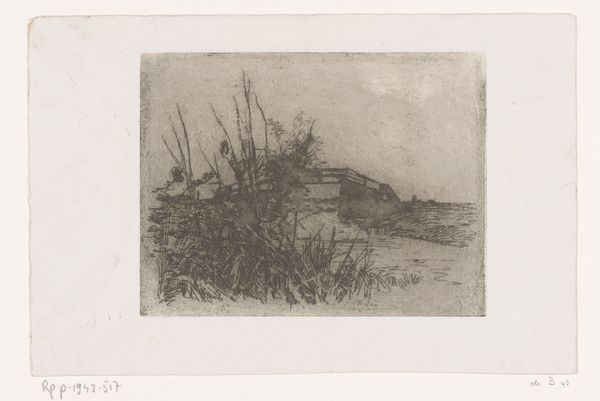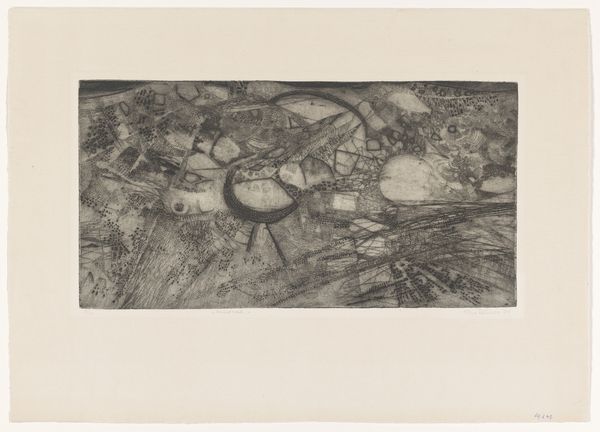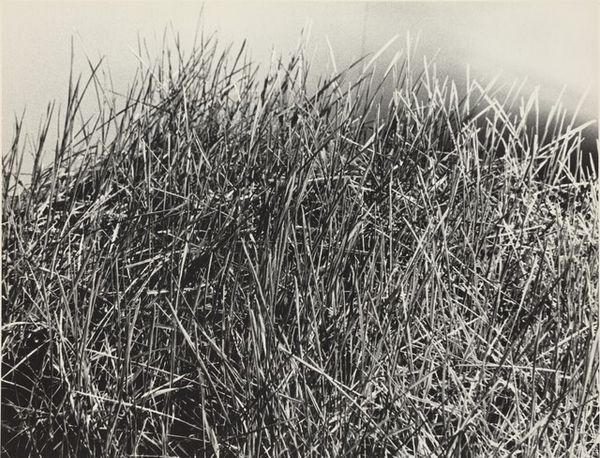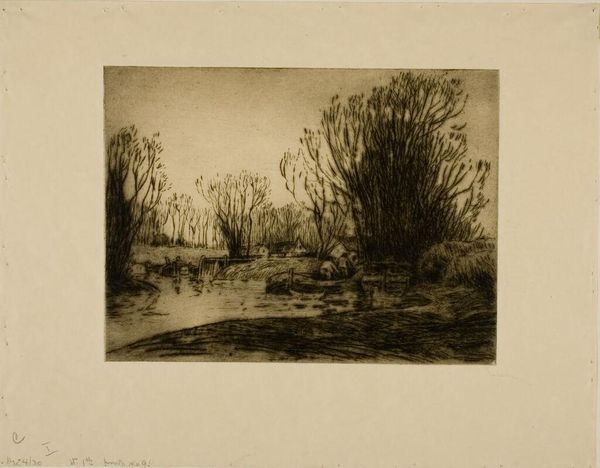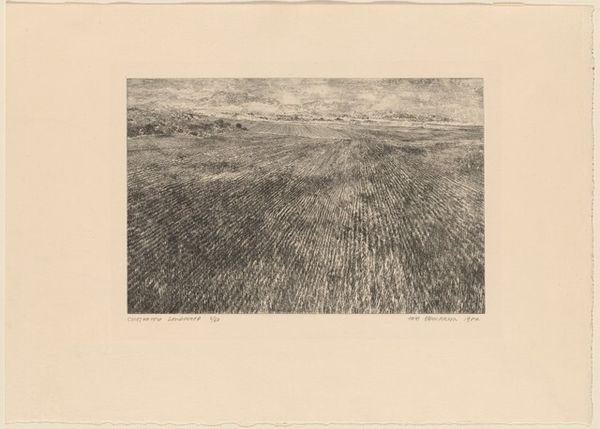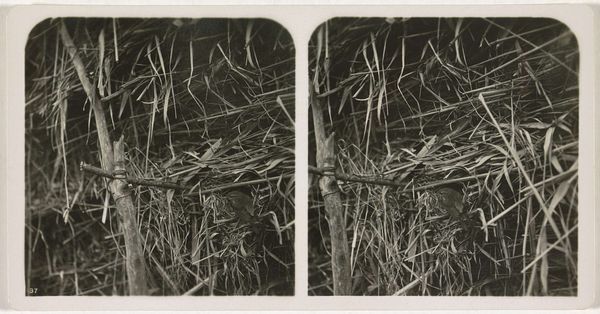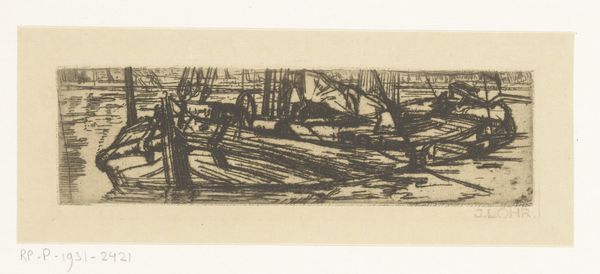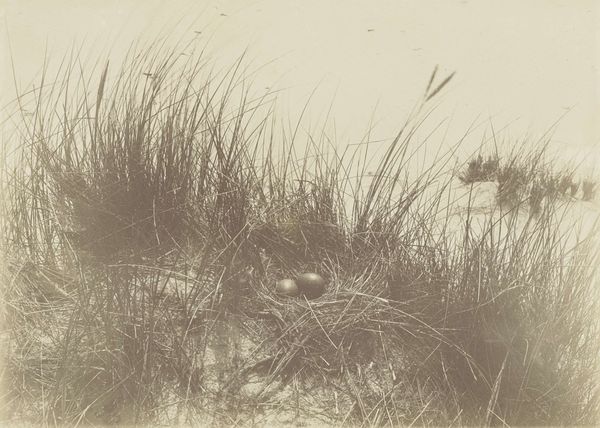
drawing, print, etching, ink
#
drawing
#
ink drawing
#
pen drawing
# print
#
etching
#
landscape
#
ink
#
realism
Dimensions: plate: 39.9 x 45.9 cm (15 11/16 x 18 1/16 in.) sheet: 48 x 65.4 cm (18 7/8 x 25 3/4 in.)
Copyright: National Gallery of Art: CC0 1.0
Curator: Ah, Jan Otava’s "Living and Dead Nature," created in 1982. The title itself is so evocative, don’t you think? It's rendered primarily in ink, through etching and drawing. Editor: It’s almost unsettling, isn’t it? This dense thicket of... are those grasses? They seem both vibrant and brittle, reaching and collapsing all at once. A very liminal emotional landscape emerges from what otherwise would be plain naturalism. Curator: Liminal, exactly! It captures a moment of transition so beautifully. Think about the physicality of the printmaking process—the deliberate act of pressing the plate, the pressure…It resonates, creating layers of meaning about decay and potential rebirth through labor-intensive production. Editor: There’s such clear dedication reflected in this detailed ink work. But speaking of rebirth, this composition makes me question the division we usually draw between landscape and still life, that divide we expect to impose over art from that period. Aren't they supposed to be diametrically opposed visions? Curator: Absolutely! The traditional view holds landscape as this grand, sweeping vista, and still life as intimate and domestic, often filled with symbolic objects. Editor: And yet, here Otava conflates those terms by focusing intently on what, if anything, can actually remain static across time: nothing at all, everything at once. Labor has ensured its preservation as a depiction of transformation! That's powerful... Curator: It also disrupts that notion of "picturesque" landscape—that idea of nature as purely beautiful and harmonious. Instead, he shows us a raw, almost brutal glimpse of nature's cycle, one we can also examine from a place of removed and privileged, critical consumption. It’s about labor, about a physical transformation we’re mostly cut off from today… Editor: Seeing those dense, almost frenzied lines now, all that obsessive attention to detail, does reframe how I feel looking at the natural subject: as a site of work, not simply scenic beauty, and an object lesson on nature as cyclical but also entropic—heading towards the point of no return. Curator: Exactly. Thinking about process alongside of decay truly does deepen my own appreciation and understanding here today... Thank you! Editor: And, frankly, you’ve helped me to realize the unsettling and beautiful nature of Otava's chosen medium itself, which holds within its every process and line a very similar promise—that something beautiful and lasting can be salvaged even from life’s most destructive forces.
Comments
No comments
Be the first to comment and join the conversation on the ultimate creative platform.

